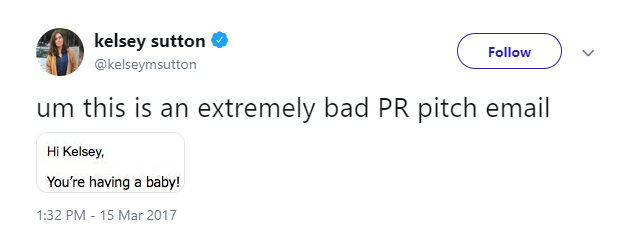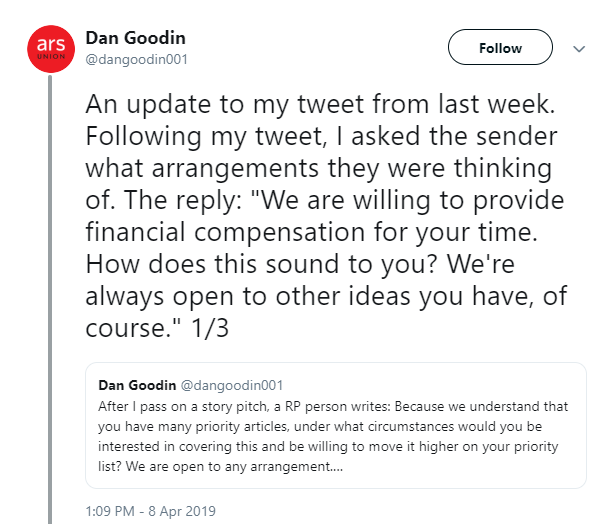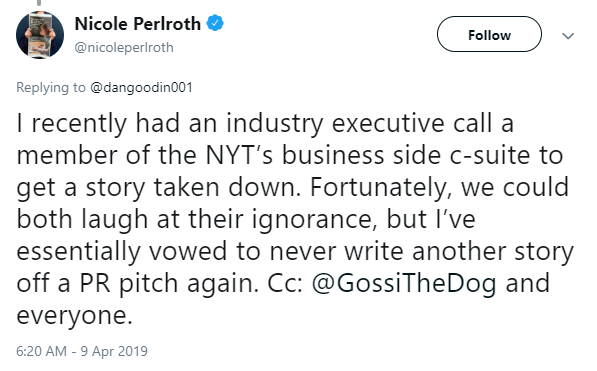In this blog, we often dispense practical media relations or PR advice based on years of experience in the trenches of tech PR. However, no one can advise PRs better on how and what to pitch reporters than… reporters. Journalists love to take to Twitter to offer up best practices or, more likely, let off steam about the terrible pitches that clog their inboxes on a daily basis. Their style is sometimes brutal, but the advice is priceless. So, we monitored some recent tweets from frustrated journalists and were both amused and a little embarrassed by what we saw. Here’s a reminder for those just starting out in media relations.
It’s probably the most fundamental rule of pitching media, but it needs repeating. PRs have to research the beats, reporting style, and preferences of those they approach in order to avoid irrelevant pitches that are more likely to end up as a mean tweet or on Muck Rack’s bad pitch roundup than as a published story. Take it from BuzzFeed’s David Mack and Tampa Bay Times’ Kathryn Varn (to pick just two): what seems difficult and time-consuming at the outset will save pain in the long run.

Media pitching shouldn’t be a vehicle for false intimacy, hints of quid-pro-quo, or – the worst – clickbait-style subject lines. Those are presumptuous at best, unprofessional at worst. There’s another way to get in good with reporters — help them do their job well. See this post for real ways to build stronger media relationships.

Nicole Perlroth makes a good point in a tweet today about her “PR Wasteland” inbox. The bar for relevance in certain categories, like her beat of cybersecurity, is high. Funding alone isn’t necessarily newsworthy to an IT security journalist. (Try TechCrunch or VentureBeat for those.) It pays to remember that what’s newsy to a client, like a product launch, exciting new campaign, or corporate reshuffling, may not be enough for an article. Our job is to help a journalist connect the dots for a story about a larger trend or happening.

This one’s dangerous. Occasionally an inexperienced or unscrupulous PR pro goes beyond carelessness into ethically questionable territory. It’s possible that the person described here confused Dan Goodin with an influencer who accepts payment for social posts or branded content, but if so, that compounds the error. Any good media relations professional understands that no reputable journalist accepts money or gifts, and calling it “compensation for their time” is an insult to both parties.

On the other end of the spectrum, there’s also the example noted here — a completely unacceptable attempt by an executive to spike an already published story. While it’s good practice to ask for any mistakes to be corrected, an attempt to bully a publication in the absence of factual errors is doomed to fail, and it will do nothing for the company’s reputation. See our earlier post for more tips on maintaining media relationships under pressure.


Finally, from the dark files of PR pros need to get it together come some real gems. Everybody makes mistakes, but these three episodes show a need for remedial education — and possibly better email software.